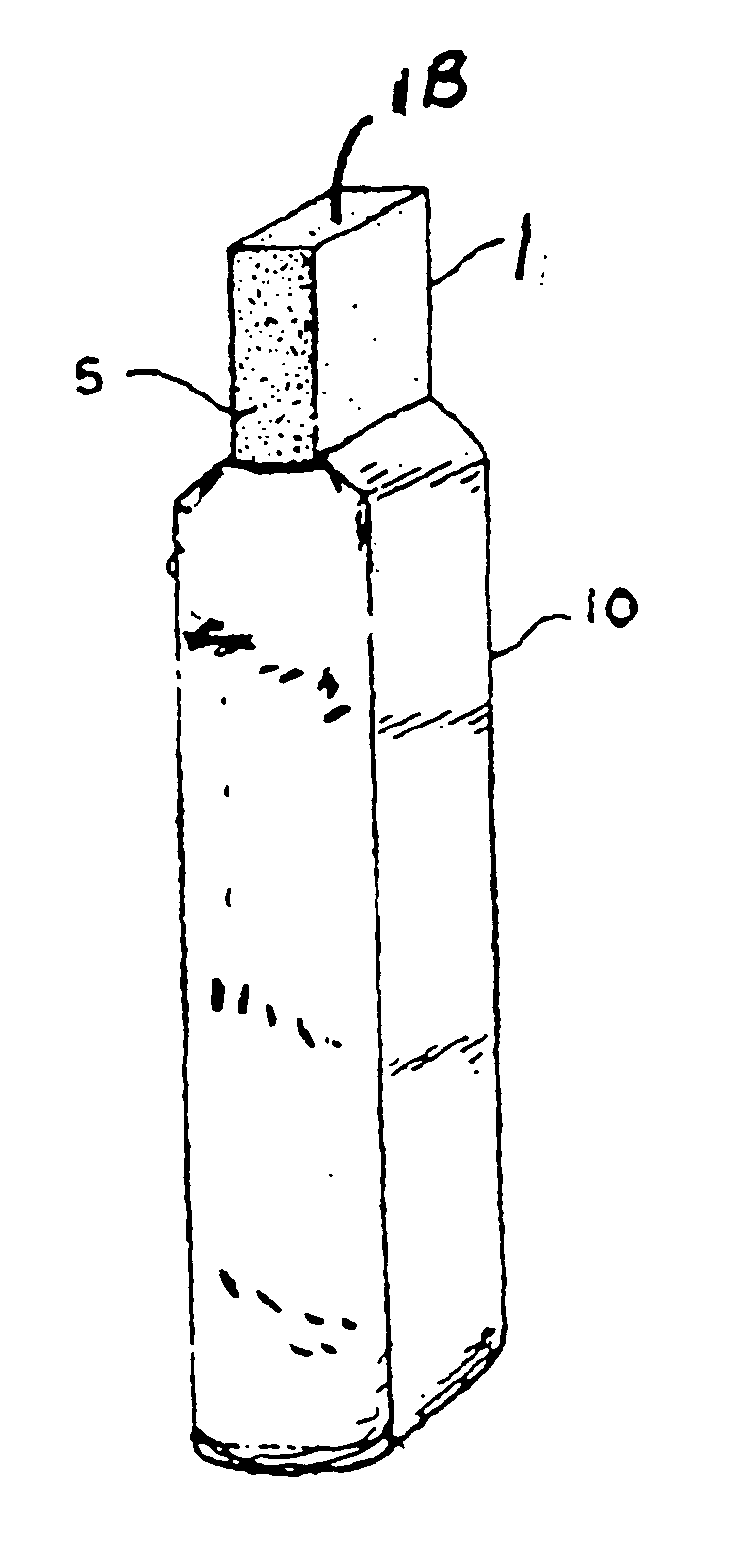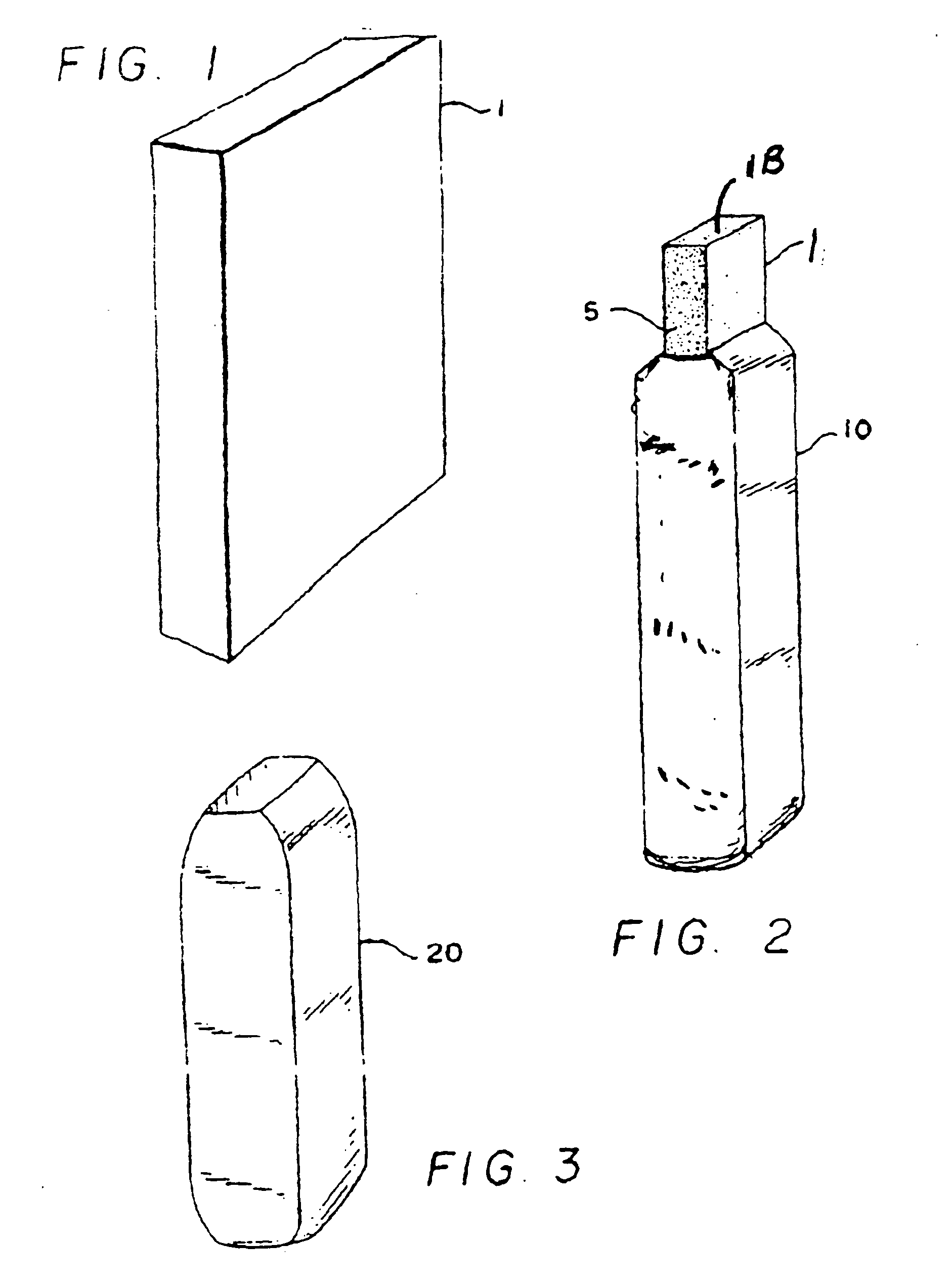Investment casting mold and method of manufacture
a technology of investment casting and molds, which is applied in the direction of foundry molds, metal-working equipment, foundry patterns, etc., can solve the problems of fragile investment casting shell molds and prone to breakage, and achieve the effect of improving green strength and greater thickness
- Summary
- Abstract
- Description
- Claims
- Application Information
AI Technical Summary
Benefits of technology
Problems solved by technology
Method used
Image
Examples
example 1
[0046] This example illustrates forming refractory slurry by mixing a dry blend that includes ceramic filler, refractory fiber, and glass fiber and mixing that dry blend with an aqueous colloidal silica sol.
[0047] 100 grams Orleans One refractory fiber of Wollastonite, 20 grams 731 ED ⅛″ milled E-glass fiber, and a ceramic filler that includes 715 gms fused Silica 120 (120 mesh fused silica from C-E Minerals Co., Greeneville, Tenn.) and 715 gms fused Silica 200 (200 mesh fused silica from C-E Minerals Co., Greeneville, Tenn.) are dry mixed to form a dry blend. The dry blend is mixed with 1000 gms of Megasol® that has a solids content of 45%, a pH of 9.5 and a titratable Na2O content of 0.2% to form a refractory slurry.
example 2
[0048] This example illustrates forming a refractory slurry by mixing a dry blend that includes ceramic filler, refractory fiber, glass fiber, and organic polymeric fiber and mixing that dry blend with an aqueous colloidal silica sol.
[0049] 100 grams Orleans One refractory fiber of Wollastonite, 20 grams 731 ED ⅛″ milled E-glass fiber, a ceramic filler that includes 715 gms fused Silica 120 and 715 gms fused Silica 200 are dry mixed with 20 grams polyethylene fiber that has a length of 1 mm and a diameter of 25 micron to form a dry blend.
[0050] The dry blend is mixed with 1000 gms of the Megasol® of example 1 to form a refractory slurry.
example 3
[0051] This example illustrates forming a refractory slurry by mixing a dry blend that includes ceramic filler, refractory fiber and organic polymeric fiber and mixing that dry blend with an aqueous colloidal silica sol.
[0052] Polyethylene fiber that has a length of 1 mm and a diameter of 20 microns to form a dry blend.
[0053] The dry blend is mixed with 1000 gms of the Megasol® of example 1 to form a refractory slurry.
PUM
| Property | Measurement | Unit |
|---|---|---|
| length | aaaaa | aaaaa |
| length | aaaaa | aaaaa |
| average length | aaaaa | aaaaa |
Abstract
Description
Claims
Application Information
 Login to View More
Login to View More - R&D
- Intellectual Property
- Life Sciences
- Materials
- Tech Scout
- Unparalleled Data Quality
- Higher Quality Content
- 60% Fewer Hallucinations
Browse by: Latest US Patents, China's latest patents, Technical Efficacy Thesaurus, Application Domain, Technology Topic, Popular Technical Reports.
© 2025 PatSnap. All rights reserved.Legal|Privacy policy|Modern Slavery Act Transparency Statement|Sitemap|About US| Contact US: help@patsnap.com


